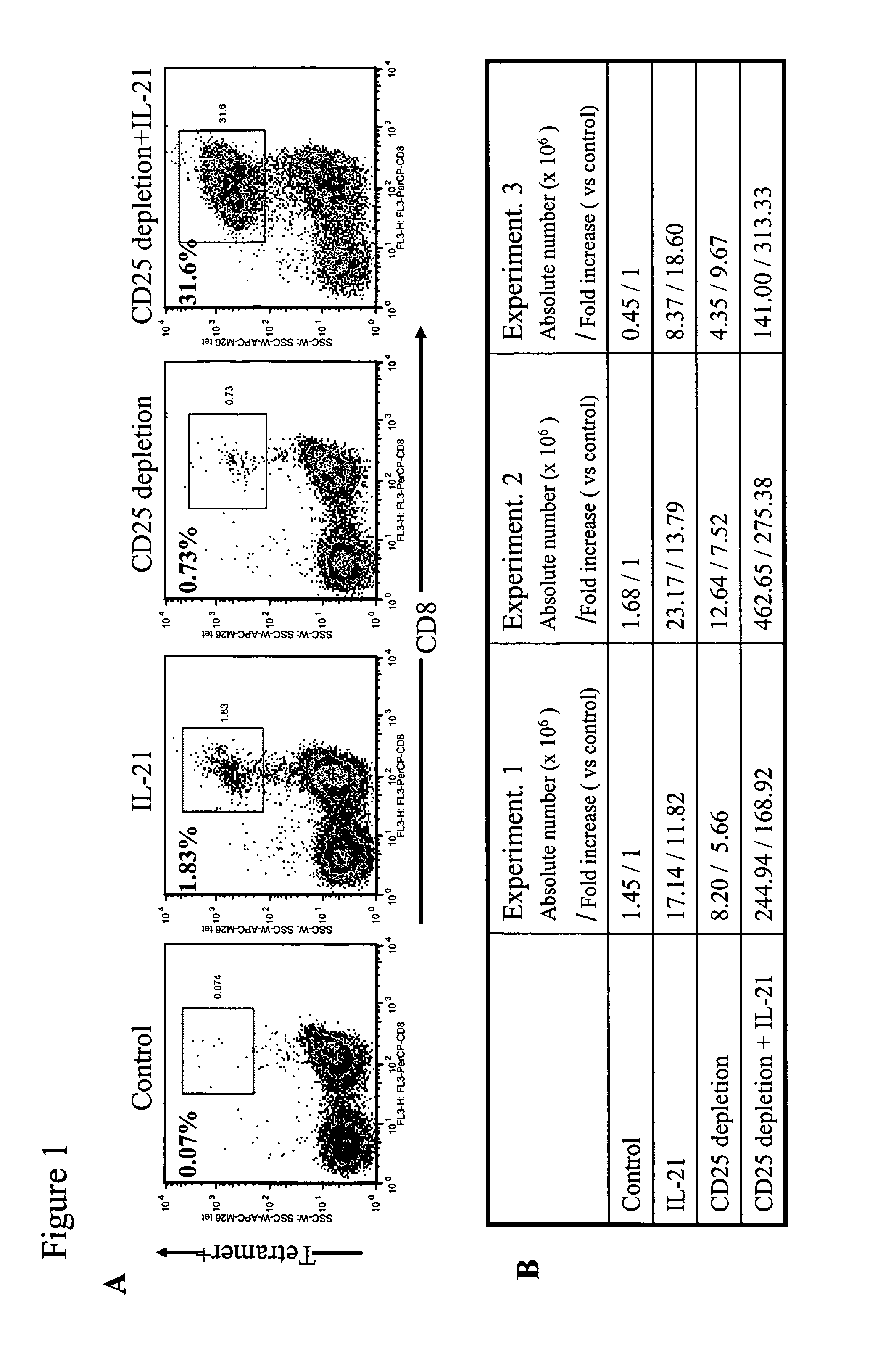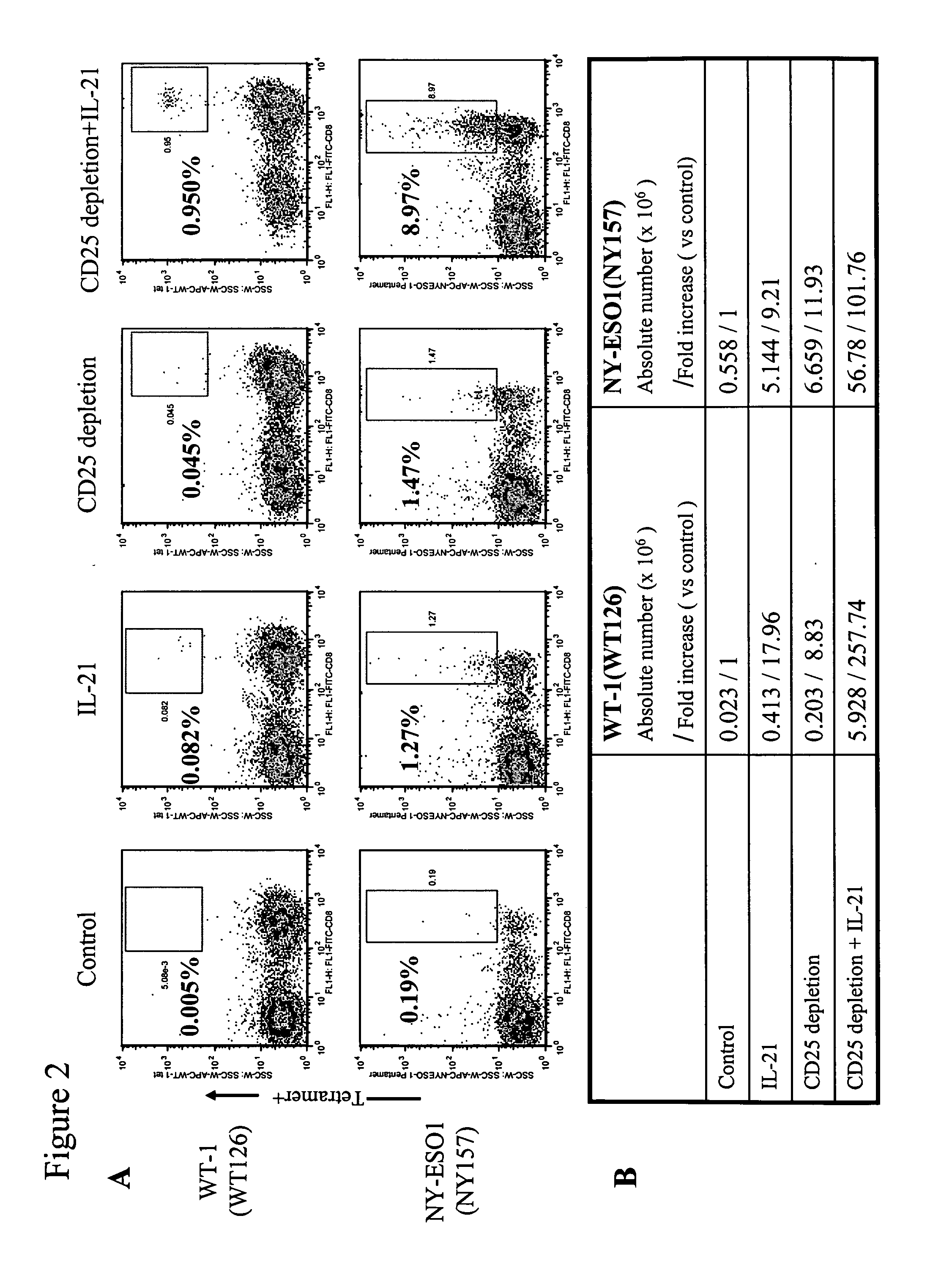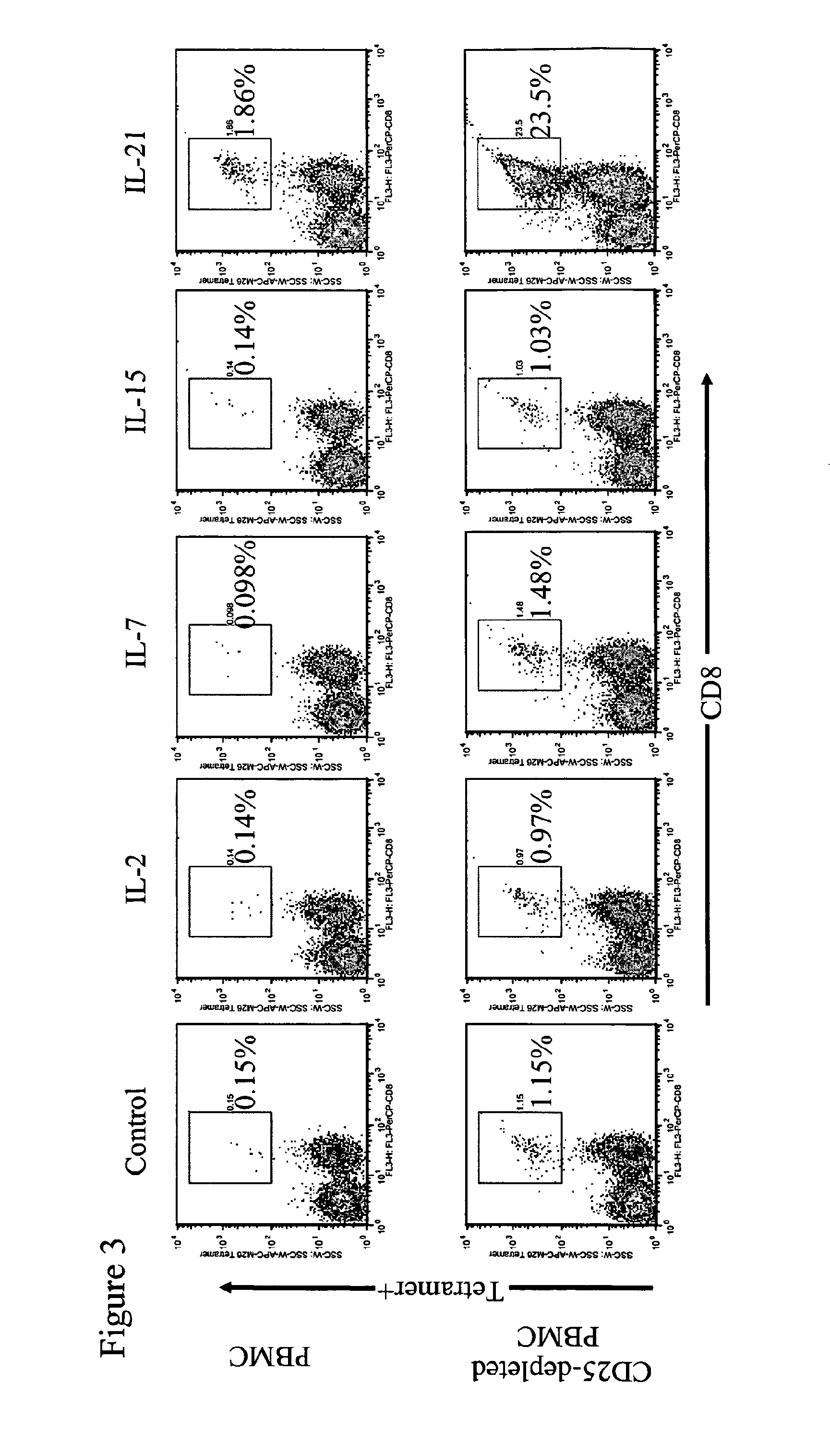Enhanced generation of cytotoxic t-lymphocytes by il-21 mediated foxp3 suppression
a technology of cytotoxic t-lymphocytes and suppression, which is applied in the direction of antibody medical ingredients, drug compositions, immunological disorders, etc., can solve the problems of inability to sort for viable t-lymphocytes, impaired proliferative response to antigenic stimulation, and the inability to isolate tumor-reactive t cells
- Summary
- Abstract
- Description
- Claims
- Application Information
AI Technical Summary
Benefits of technology
Problems solved by technology
Method used
Image
Examples
Embodiment Construction
[0026]“T cells” or “T lymphocytes” as used herein may be from any mammalian, preferably primate, species, including monkeys, dogs, and humans. In some embodiments the T cells are allogenic (from the same species but different donor) as the recipient subject; in some embodiments the T cells are autologous (the donor and the recipient are the same); in some embodiments the T cells are syngeneic (the donor and the recipients are different but are identical twins).
[0027]Cytotoxic T lymphocyte (CTL) as used herein refers to a T lymphocyte that expresses CD8 on the surface thereof (i.e., a CD8+ T cell). CTLs administered to patients or subjects are, in general, “antigen-specific” in that they specifically bind to a tumor-associated antigen and are able to specifically recognize and lyse cells of that tumor, or specifically bind to a microbe-associated antigen and are able to specifically recognize and lyse that microbe.
[0028]“Enriched” and “depleted” as used herein to describe amounts of ...
PUM
| Property | Measurement | Unit |
|---|---|---|
| concentrations | aaaaa | aaaaa |
| concentrations | aaaaa | aaaaa |
| temperature | aaaaa | aaaaa |
Abstract
Description
Claims
Application Information
 Login to View More
Login to View More - R&D
- Intellectual Property
- Life Sciences
- Materials
- Tech Scout
- Unparalleled Data Quality
- Higher Quality Content
- 60% Fewer Hallucinations
Browse by: Latest US Patents, China's latest patents, Technical Efficacy Thesaurus, Application Domain, Technology Topic, Popular Technical Reports.
© 2025 PatSnap. All rights reserved.Legal|Privacy policy|Modern Slavery Act Transparency Statement|Sitemap|About US| Contact US: help@patsnap.com



